Last-Minute NYC Holiday Gift Guide 🎁
We’ve created a holiday gift guide with presents for the intrepid New Yorker that should arrive just in time—


Hell’s Kitchen has come a long way from the gang rule it was once under. Today its real estate prices are skyrocketing, new construction projects are constantly underway, and trendy, tourist-friendly bars and restaurants are popping up on almost every corner. Many now mourn the area’s increasing gentrification, but they can take comfort in the fact that there are still some largely undiscovered places in this once-gritty neighborhood.
Landmark Tavern, 626 11th Avenue, on the corner of 46th Street
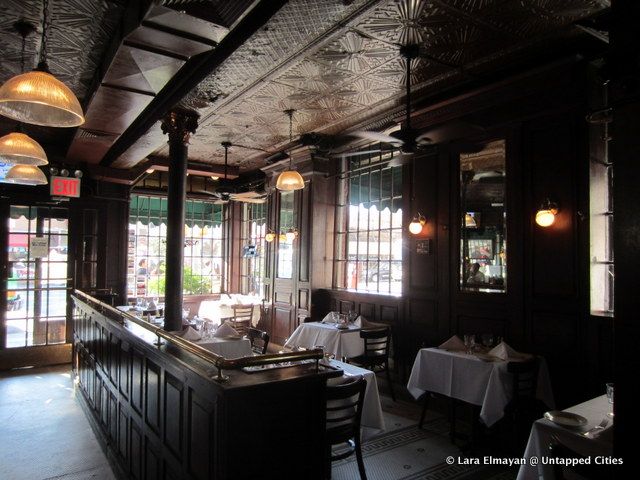
This stately pub, established in 1868, is one of the oldest in Midtown Manhattan, and is perhaps most well known for being a former speakeasy favored by Hollywood actor and dancer George Raft. The Scarface star was largely identified with his portrayals of gangsters, as well as with his actual associations with a New York Jewish mob. It’s no surprise that he frequented Hell’s Kitchen.
The building has seen at least two deaths, and as such, has inevitably has accumulated some ghost stories. The most famous involved a Confederate Civil War veteran getting knifed in bar fight. One story says that the veteran stumbled upstairs and bled to death in a bathtub that still stands in the building; according to another, he was beheaded by his attacker in the tub. Either way, he supposedly still protests his fate by knocking books off the shelves on the second floor. The young daughter of the pub’s former owner died of typhoid fever in the building and, according to legend, still walks the third floor. Ponder the possibility of the presence of the dead as you chow down the pub’s much-loved lobster ravioli and chat with the amazingly friendly bartenders.
Delphinium Home, 353 W 47th Street, between 8th and 9th Avenue
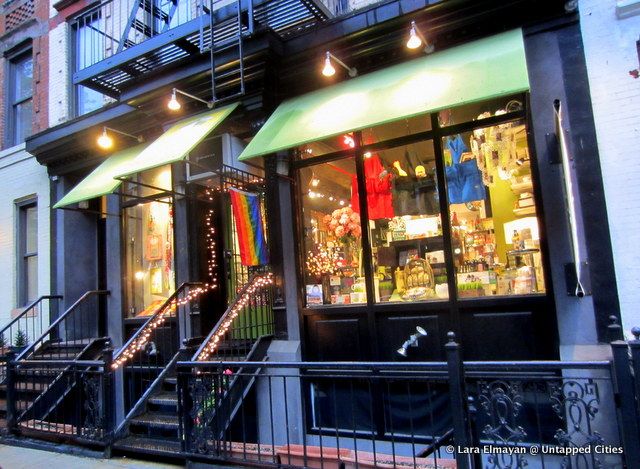
“Home” in this store’s name suggests dangerously of domesticity and stainless steel tea infusers, but don’t walk by its colorful shopfront on 47th Street. It houses unique gifts and decor for the childish, immature, and overly sarcastic, and for anyone with a great sense of humor; titles like “The Taking Tree,” “100 Reasons to Panic About Having a Baby” and “Farts Around the World” grace its shelves. If you’re into cooking or scented candles, you’ll find yourself even more at home here. They do, in fact, sell tea infusers. As long as you don’t mind that the infuser sinking into your mug of earl grey is shaped like the Titanic, this might become your favorite store west of Broadway.
DeWitt Clinton Park, 11th Avenue between 52nd and 54th Street
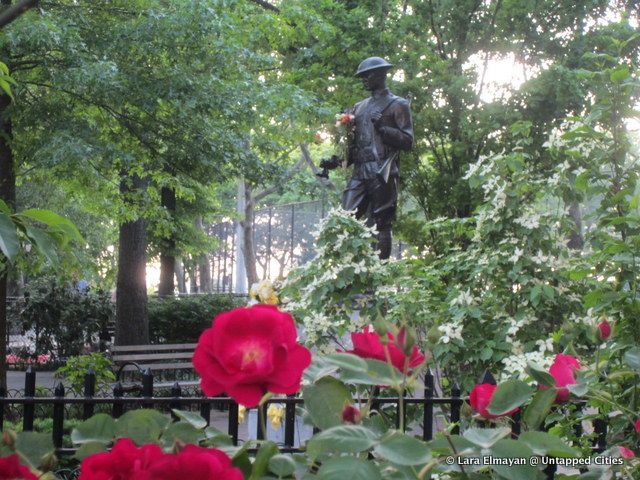
We’re thankful that this part of Hell’s Kitchen, occupying two-blocks between 11th and 12th Avenue, is still green. The land used to be the site of the home of General Garrit Hopper Striker, built in 1752, as well as the the site of the Mott farmhouse, built in 1796. General Striker’s house was torn down in 1896, and one year later, Mott farmhouse suffered the same fate. The other buildings on the site were demolished in 1902, and the land was cleaned of the litter, rubbish, and discarded carts that had been left behind.
The park that opened in the early 20th century featured a gymnasium, running track, playgrounds, a recreation and bathing pavilion and multiple pathways and viewing decks of the Hudson River. At the center of it all was a children’s farm garden, which was the first of its kind. But DeWitt Clinton Park didn’t stay lovely for long. In the ’80s and ’90s, homeless encampments and drug dealings abounded, and in one particularly terrifying incident in 1986, teenagers stabbed a homeless man to death.
Today, the park is considerably safer. It’s a popular location for dog-owners and softball and basketball players, and the extensive playground and maps of American rivers drawn on the asphalt lend it an air of innocence. In 2010, the park even became paradise to certain bibliophiles when it hosted the fourth International Quidditch Association’s World Cup.
The softer and more family-friendly name “Clinton” is still being pushed upon the neighborhood of Hell’s Kitchen in order to make it more marketable. Nice try, real estate agents trying to sell to middle-aged yuppies. We remember the parks pre-Quidditch days, and they’re too interesting to be disassociated with the park’s name and the neighborhood.
Empanada Mama, 763 9th Avenue, between 51st and 52nd Street
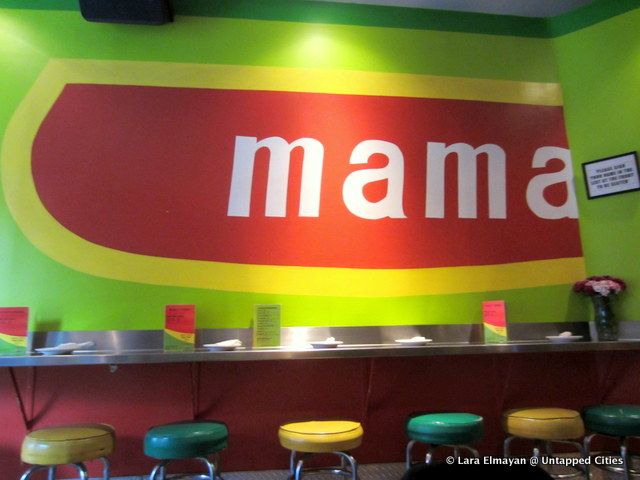
This is one of the go-to cheap place of West Side Untapped contributors, and at $2.75 an empanada, it’s easy to see why. This narrow cafe, catering mostly to take-out orders, would be easy to pass by if it wasn’t decked out in a bright color scheme of green, yellow, and red. It has the rustic old-world charm of a World War-era Cuban bar, with elements of New York modernity and exposed brick. All of which take a back seat to its famous empanadas, delivered to your table in individual paper bags.
The Peanut Gallery, 595 11th Avenue, between 45th and 46th Street.
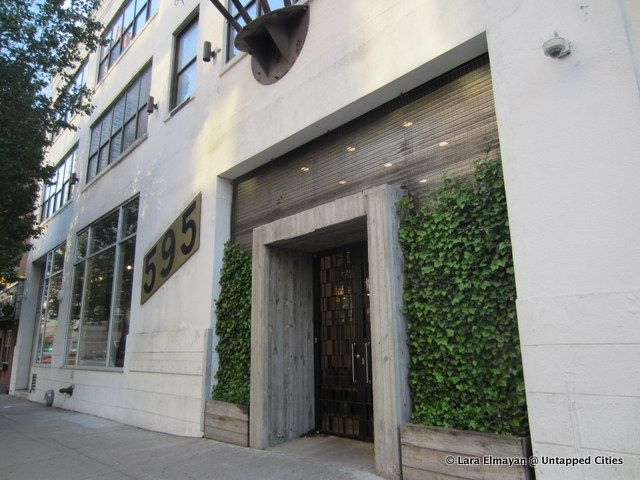
We had to peek through the door of 595 11th Avenue to find out what the building was used for. What we saw through the glass and iron bars were a peanut dispenser and a standing taxidermied bear. As we found out later, we were right to decide not to buzz or sneak in behind someone with an actual key to the door – the peanut dispenser’s placement inside means that the gallery is closed. If you do happen to pass by when the dispenser is inside, make your way past the bear and into the gallery. Its myriad of seemingly random rules – only 3 people allowed in at a time, 10 minutes per visit, no direct eye contact, “call your mother” (after all she’s done for you) – are worth following for the unique artistic experience that Peanut Gallery offers.
The Original Soup Man, 259A W 55th Street, between Broadway and 8th Avenue
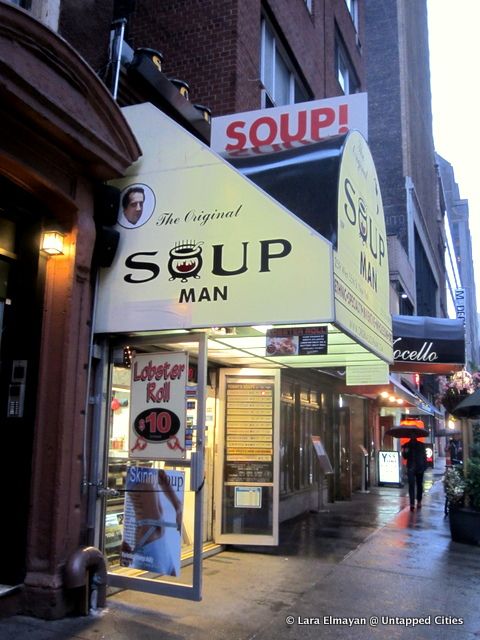
The sign above directs you: “Pick the soup you want! Have your money ready! Move to the extreme left after ordering!” Despite the harshness, we can tell that Jerry Seinfeld and Larry David exaggerated the tyranny of Al, the culinary genius who inspired the famous Soup Nazi in Seinfeld. The man does, after all, provide customers with a balanced meal of bread, an orange, and a Lindt chocolate truffle in the bag with your soup purchase. Still, don’t push your luck. Pick the soup you want. (It’s not nearly as simple as it sounds.) Have your money ready, and move to the extreme left after ordering. If, after all that, Al still seems a little curt, remember that he has a reputation to uphold. And he’s certainly capitalizing on his infamy; he sells “NO SOUP FOR YOU!” shirts and baseball hats here. Yes, this is Al’s original location, and the one parodied on Seinfeld, although it’s much smaller than the televised version. And yes, the soup does make “your legs buckle.” There’s no seating, so keep in mind that Columbus Circle and the southwest corner of Central Park four blocks uptown are the nearest public seating areas that are currently open.
Get in touch with the author @laraelmayan.
Subscribe to our newsletter